Bass, EP’s, perch and saratoga flies
{{start}}
{{end}}
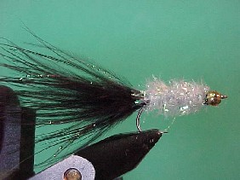
{{+1}}Flash Harry{{-1}}
{{start}}
In larger sizes it works well for Bass, EP's, Silver Perch and Yellow Bellies and in smaller sizes its a great for trout. I like to fish it on a fast sinking line either ripped or with a stop and start jerky retrieve or roly-poly.{{end}}

{{+1}}Booby beetle – Chatto’s original{{-1}}
{{start}}
Boobies are a fantastic bass fly when fished on the surface but occasionally they hang so low in the water they get a bit hard for me to see. To overcome that when seeing the fly is necessary I added a back of 2mm closed cell foam - works like a dream. This is undoubtedly my favorite bass fly.{{end}}

{{+1}}Straggle shrimp{{-1}}
{{start}}
I always fish it on a fast sink line with a leader of around 8 or 9 feet. The best retrieve is similar to spinning soft plastics i.e. jerky movements with plenty of pauses to let the fly to settle back on the bottom. Used in this way it's a good representation of a shrimp or prawn fleeing from its sandy or weedy retreat after being disturbed.{{end}}
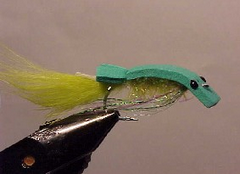
{{+1}}Wiggle minnow{{-1}}
{{start}}
By varying the materials used, the colours and size I have accounted for trout, bream, flathead, mangrove jack and even barramundi on wiggle minnows. The recipe I have set out below is just one version of this very adaptable fly and I would encourage you to individualize the fly to your own requirements.{{end}}
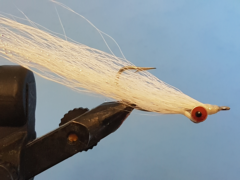
{{+1}}Clouser minnow{{-1}}
{{start}}
The Clouser in my view is the quintessential salt water fly. It can be tied in sizes to suit Bream or Billfish and with the correct dressing and size is equally at home in saltwater, trout and bass fisheries.{{end}}
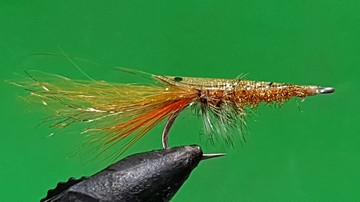
{{+1}}PET shell prawn{{-1}}
{{start}}
Prawns and shrimp are crustaceans, of the family Isopod, and are endemic to our Australian estuary waters. They are toward the top of the food chain for a lot of coastal species of fish including bream, flathead and whiting.{{end}}
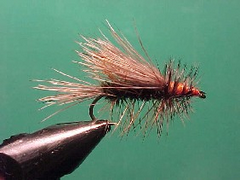
{{+1}}Stimulator variant{{-1}}
{{start}}
Whilst not tied to imitate any particular insect this down wing style of fly can be tied with your favorite materials and in your favorite colours to imitate a range of insects. It is a good prospecting fly when nothing appears to be happening. In larger sizes it can be twitched or fished dead drift to imitate a hopper, cicada or other terrestrial insect that has found itself in the water or in smaller sizes can be danced across the surface to imitate a caddis fly.{{end}}
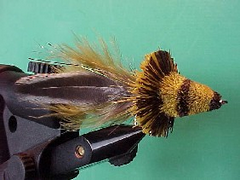
{{+1}}Dahlberg diver{{-1}}
{{start}}
When bass are feeding on big insects like Cicadas and Hoppers that crash onto the water they also become susceptible to large noisy and obvious flies like Dahlberg Divers cast around their structure or twitched across the surface. At other times they just have a whack at these big flies because there intruding into their domain. In either case the strikes and hook ups can be spectacular.{{end}}

{{+1}}Mudeye – Chatto original{{-1}}
{{start}}
Most fly fishers will have one or more flies that they use to represent Mudeyes and these include Craigs Night-time, Tie Happy Tickler and Micks Mudeye. An alternative Mudeye representation is set out below. It incorporates many of the features of the flies mentioned above and utilizes two of my favorite fly tying materials, Peacock herl and Ring neck Pheasant (Church Window) feathers.{{end}}

{{+1}}Bass jig{{-1}}
{{start}}
With a heavy lead shot head the fly sinks quickly and can as the name implies be jigged up and down in the zone. I am sure that the same pattern in a variety of colours will work on Trout as well as estuary species such as Flathead, Bream and Whiting.{{end}}













